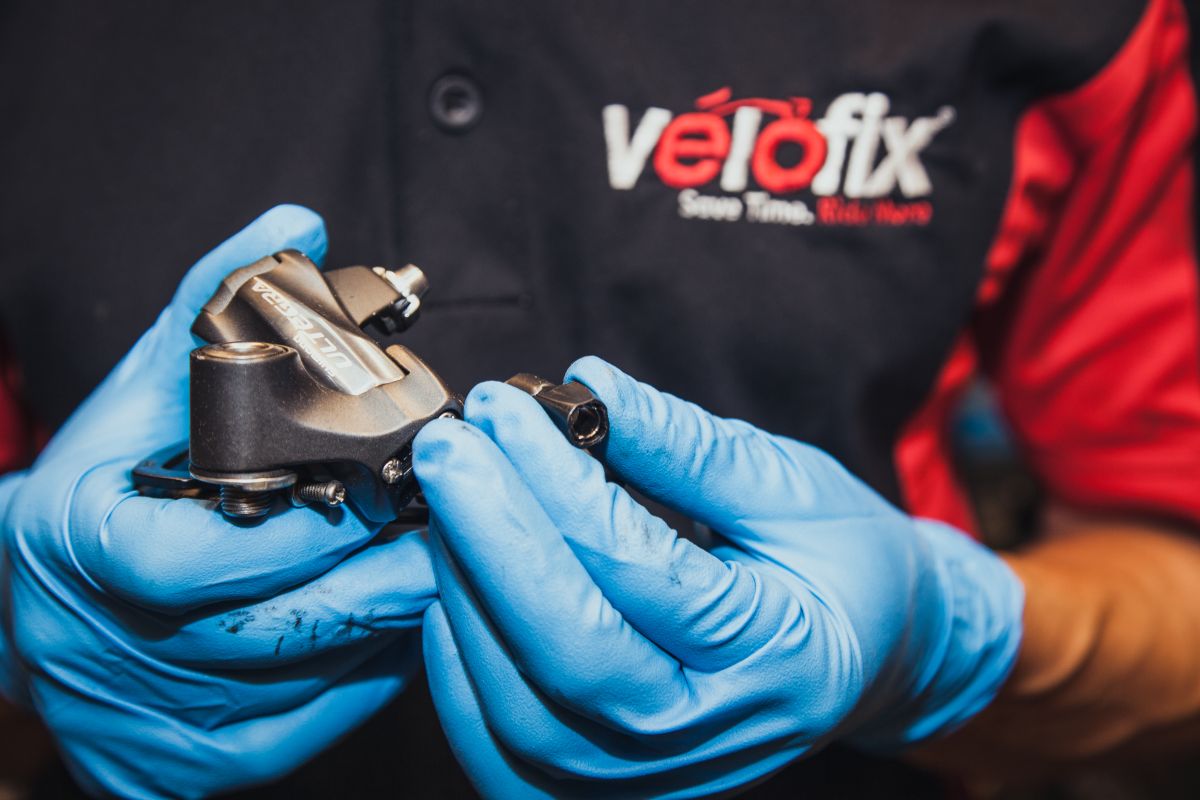Get your bicycle’s shifting in-line
How to diagnose, and fix, issues that garble your gears

by Nick Di Cristofaro
The most common maintenance issue I see is shifting problems at the back of the drivetrain. “My bike isn’t running smoothly and the gears are jumping around,” I hear. Sometimes a simple adjustment is all you need. But before you start twisting the barrel adjuster on the rear derailleur, look at a few parts and areas of the bike to find the real causes of the crummy shifting.

Begin with the basics
Start with the seemingly obvious checks. Make sure the rear wheel is tight and clamped or bolted properly within the frame. Make sure the cassette is tight A. A loose cassette will cause shifting issues. Ensure that your chain, cassette and shifters match your groupset. Mixing and matching these parts from different systems (an 11-speed cassette with a 10-speed chain, for example) will almost always cause issues. Ensure the proper spacers are behind the cassette and in between each cog.
A true wheel
Make sure the rear wheel is relatively true in order to proceed to the step below. If the wheel is out, it will throw off your rear hanger measurements.

So much hangs on the hanger
The most important part to check for precise rear derailleur shifting is the derailleur hanger and its alignment. The hanger is the little metal piece that bolts onto the frame that attaches the rear derailleur to the bike. This part is designed to “give” and sometimes break in order to save your frame when a big enough impact occurs. (Once a hanger brakes, it’s often difficult to find a replacement as there are so many variations of this part.) Sometimes it just snaps on its own likely because it wasn’t aligned in the first place or had previously been damaged. Maybe you were riding up a steep grade cross chained when it happened. The bottom line is that if the hanger isn’t aligned, no amount of adjustment will make the bike shift cleanly. After any impact, always check the rear hanger. Look closely for any cracks and replace it if you find any.
The derailleur’s jockey wheels should be in-line with the cassette cogs. If the wheels are askew, then don’t ride the bike. If the hanger is bent inboard significantly, the derailleur might travel into the spokes the next time you shift into the largest cog. The hanger must be parallel to the rear cassette. With modern 11-speed systems, the tolerance here is very tight. If things are off just a tiny bit, shifting will be compromised.
You can align the hanger using a special gauge. You remove your derailleur and attach the tool in place of the component. You then use the gauge to bend the hanger back into alignment. It is a very delicate, sometimes tedious, process. Above all, you don’t want to snap the hanger while bending it back into position.

A run at the cables
If you experience “ghost shifting” – seemingly random jumps between gears when you shift – during normal riding conditions, the cable is likely frayed somewhere. Pull back your hood covers and examine where the cable enters the shifter. This spot is where most fraying will happen. You can also loosen the cable at the derailleur and remove it slightly from the shifter to inspect it further. It is a good idea to replace cables and housing every year just to stay ahead of any issues. Remember to pre-stretch new cables and seat any new housing fully before you do any fine-tuning. Also, don’t tape housing onto the handlebar until you’ve made all the necessary adjustments. New cables and housing will almost always bring back a smooth and crisp shift feel.

Check the chain and cassette
A worn chain or cassette will also cause problems. Use a chain checker tool to see if the chain is worn. If it is, replace it. If the chain is really worn, replace the cassette as well or else skipping will occur.
Spent shifters
If a shifter is worn, you’ll experience problems even with new cables. Some Campagnolo shifters can be rebuilt with new internals. If the clicks are not as pronounced as they used to be, you can try squirting some lube to restore action. Unfortunately, sometimes the only way to cure this problem is to get a new shifter body or complete shifter.

Time to adjust
Once you’ve run through the checks above, you’re 98 per cent of the way to perfect shifting. You’ll likely have to do some fine-tuning, which is a big topic in itself. In brief, if the chain is hesitating while moving up to a larger cog, you add cable tension by turning the barrel adjuster E out or counter-clockwise. If the chain is hesitating while moving down to a smaller cog you reduce cable tension by turning the barrel adjuster in or clockwise. You have to find the right balance of cable tension for each gear/ chainring combination. When you have that part dialed, you can enjoy crisp shifting once again.

